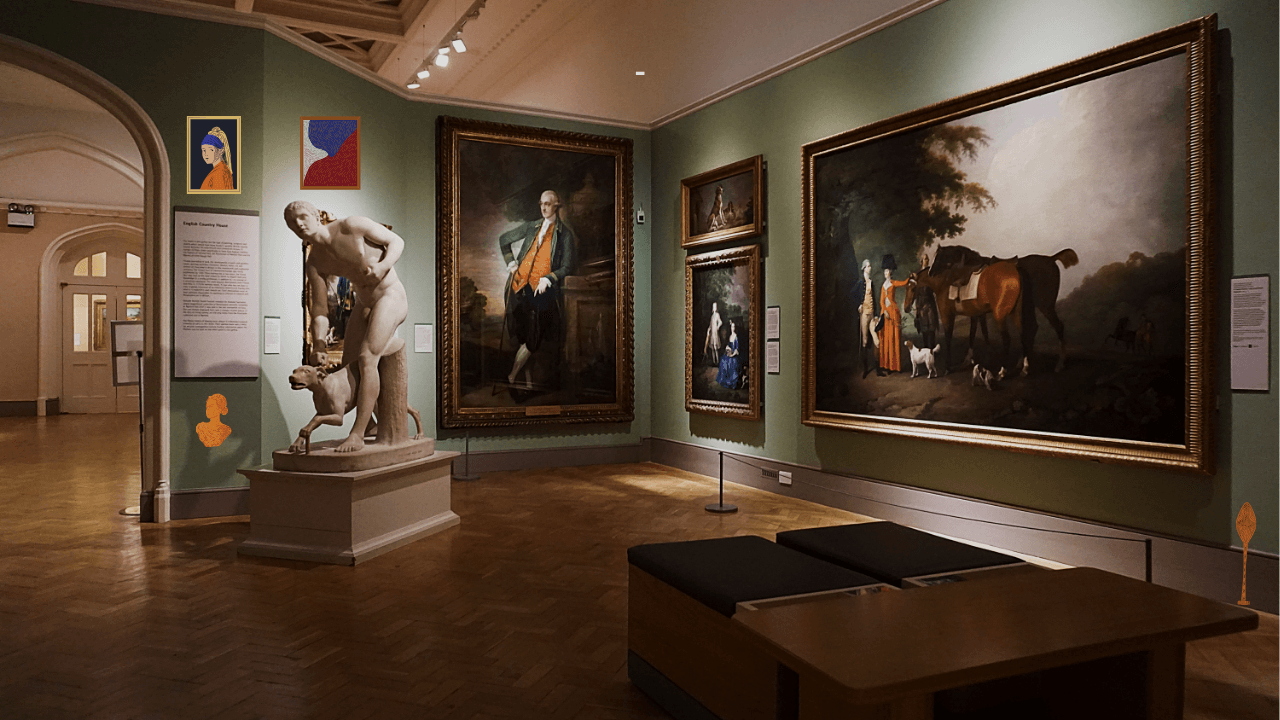Introduction to Museums and Galleries Month
Museums and Galleries Month is an annual celebration dedicated to highlighting the vital role that these institutions play in preserving cultural heritage and promoting education and artistic expression. Established through Proclamation No. 798, s. 1991, this month-long observance recognizes the importance of museums and galleries as custodians of history and creativity. The initiative seeks to foster public appreciation for the invaluable resources that these venues offer, from exhibitions showcasing artistic talent to educational programs designed to enrich community knowledge.
The significance of Museums and Galleries Month lies not only in its celebration of the arts and culture but also in its commitment to fostering a deeper understanding of the community’s shared history and identity. By raising awareness of the diverse collections housed within these institutions, the proclamation aims to encourage individuals to engage with their local museums and galleries, thus cultivating a sense of pride and ownership over cultural heritage.
This special observance serves multiple objectives, including the promotion of awareness of different art forms and the vital contributions that artists make to society. In doing so, Museums and Galleries Month aligns itself with broader educational goals, emphasizing that museums and galleries are more than mere repositories of artifacts; they are dynamic spaces that encourage dialogue, creativity, and learning. This month acts as a call to action for both the public and institutions to come together in celebrating creativity, diversity, and the stories embedded in every exhibition.
As communities engage in activities and events throughout Museums and Galleries Month, the hope is that this celebration will inspire a lifelong appreciation of culture, ensuring ongoing support and recognition for these critical institutions in society.
A Historical Context: Proclamation No. 798, s. 1991
Proclamation No. 798, s. 1991 was established during a pivotal period in the Philippines that sought to promote and elevate the role of cultural institutions, specifically museums and galleries. In the early 1990s, the country was experiencing a surge in national awareness concerning the preservation of its rich cultural heritage. This social climate favored initiatives aimed at fostering appreciation for the arts and culture among the Filipino populace. Through this proclamation, the government intended to harness the potential of cultural institutions as not only repositories of history but also as vital instruments for education and community engagement.
The motivations behind Proclamation No. 798 were multifaceted. It aimed to increase public participation and awareness by asserting that museums and galleries serve as essential components of national identity. Recognizing that these institutions play a significant role in shaping cultural narratives, advocates of the proclamation pushed for a dedicated month to celebrate and acknowledge the various contributions of these spaces to society. By designating a special time for this celebration, proponents sought to highlight the necessity of fostering an environment where cultural appreciation could thrive, encouraging citizens to explore their heritage through dynamic exhibitions and programs.
The implications of this proclamation have been far-reaching, contributing significantly to the enhancement of the cultural sector. It has led to an increase in collaborations among local artists, curators, and educators, effectively fostering a vibrant arts community. Moreover, the designated museums and galleries month has inspired numerous programs, workshops, and other initiatives aimed at promoting cultural literacy. This effort illustrates the vital role that such institutions play in fortifying cultural stability and continuity, providing a lasting legacy that resonates well beyond the confines of their walls.
Celebration Activities and Initiatives
Museums and Galleries Month, as established by Proclamation No. 798, s. 1991, has become a significant period for fostering appreciation for culture and the arts within local communities. Throughout this month, various activities and initiatives are organized to engage the public and raise awareness about the importance of museums and galleries. Each year, institutions curate a diverse range of events designed to attract visitors of all ages, thereby enhancing community participation.
Among the special activities are exhibitions that showcase both permanent collections and temporary displays, highlighting local artists and cultural heritage. These exhibitions aim not only to draw in art enthusiasts but also to educate visitors on the narratives these pieces convey. Many institutions collaborate with local artists to offer workshops, allowing participants to gain hands-on experience in various art forms. Such interactive initiatives not only foster creativity but also promote a deeper understanding of the artistic process.
Educational programs play a crucial role during Museums and Galleries Month. These programs are often tailored for schools and families, providing learning opportunities that extend beyond traditional classroom environments. By organizing guided tours, storytelling sessions, and interactive exhibits, museums become dynamic spaces of learning that invite community members to engage with art and history in meaningful ways.
Moreover, partnerships between local museums and galleries serve to enhance outreach efforts. These collaborations may involve joint events, promotional campaigns, or co-hosted workshops that maximize resources while attracting broader audiences. By working together, institutions amplify their reach, creating a vibrant cultural scene that invites more people to take part in this month-long celebration.
Ultimately, the initiatives that unfold during Museums and Galleries Month illustrate the profound impact that cultural institutions can have on community engagement, reinforcing the significance of art in daily life.
The Impact of Museums and Galleries Month on Cultural Awareness
Museums and Galleries Month, celebrated in accordance with Proclamation No. 798, s. 1991, plays a crucial role in enhancing cultural awareness and appreciation within society. This vibrant initiative facilitates a unique opportunity for communities to engage with various forms of artistic expression and cultural heritage. By showcasing diverse artistic endeavors, it not only informs the public about the importance of preserving historical artifacts but also encourages individuals to participate in these cultural celebrations.
Throughout the years, the significance of Museums and Galleries Month has been evident in its ability to attract a wider audience to art appreciation. Special exhibitions, workshops, and outreach programs organized during this month have allowed individuals from varying backgrounds to explore and understand the richness of their own cultural identities and those of others. This exposure fosters inclusivity and appreciation for various cultures, highlighting artistic contributions from different communities.
Moreover, this celebration has instigated crucial dialogues surrounding art and history, urging participants to reflect on the past while considering its implications on the present and future. The discussions ignited during Museums and Galleries Month have led to a renewed interest in the importance of cultural preservation, urging institutions to adapt and innovate. This alignment with contemporary societal needs positions Museums and Galleries Month as an essential platform for ongoing cultural education and engagement.
Looking forward, it is imperative that the initiative continues to evolve, incorporating new technologies and methods to reach and engage younger audiences. By embracing digital platforms and interactive experiences, Museums and Galleries Month can enhance its relevance in today’s fast-paced world, ensuring that culture remains accessible and appreciated. In this way, the initiative fosters a deeper understanding of our shared heritage, paving the way for future generations to engage with their cultures meaningfully.





